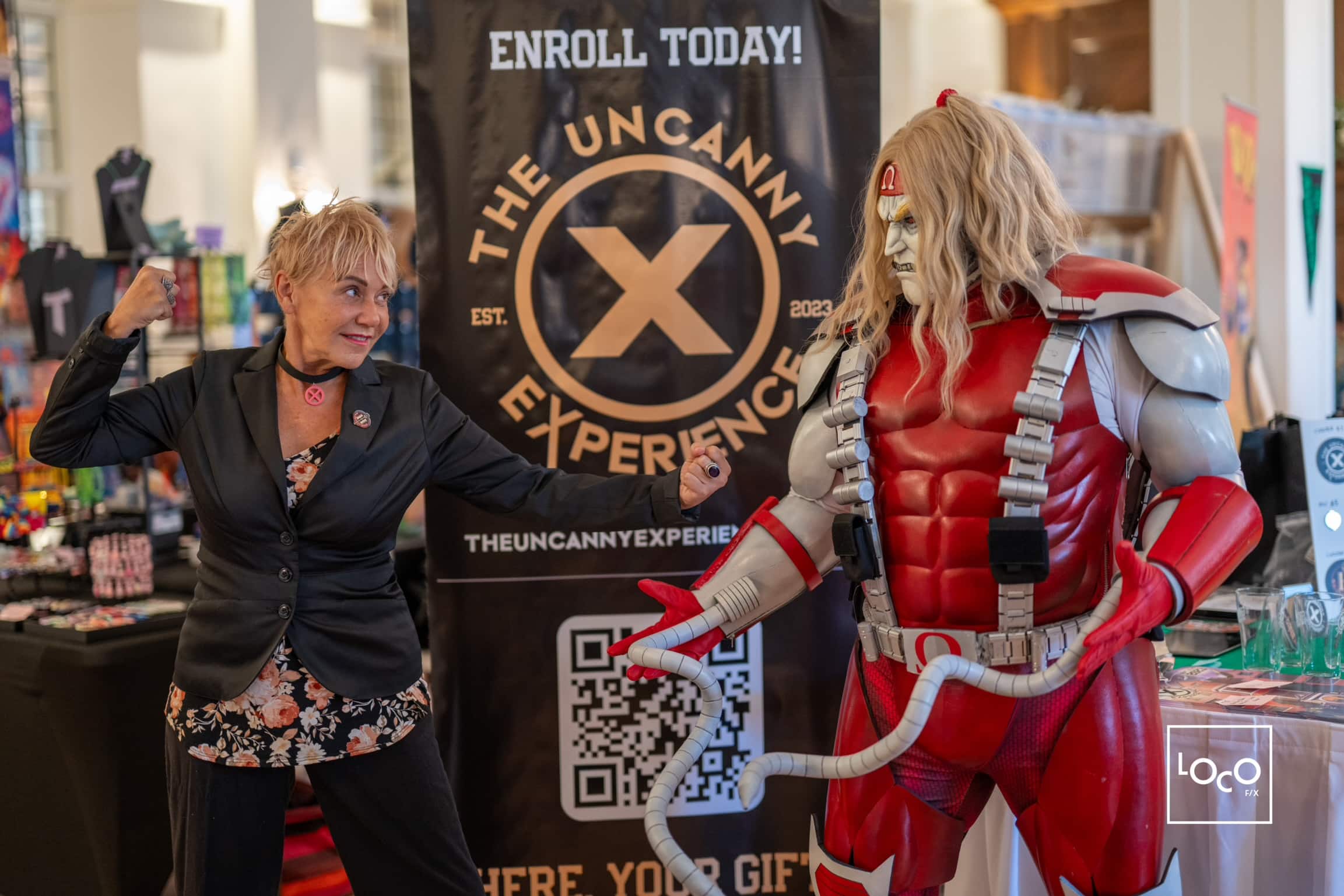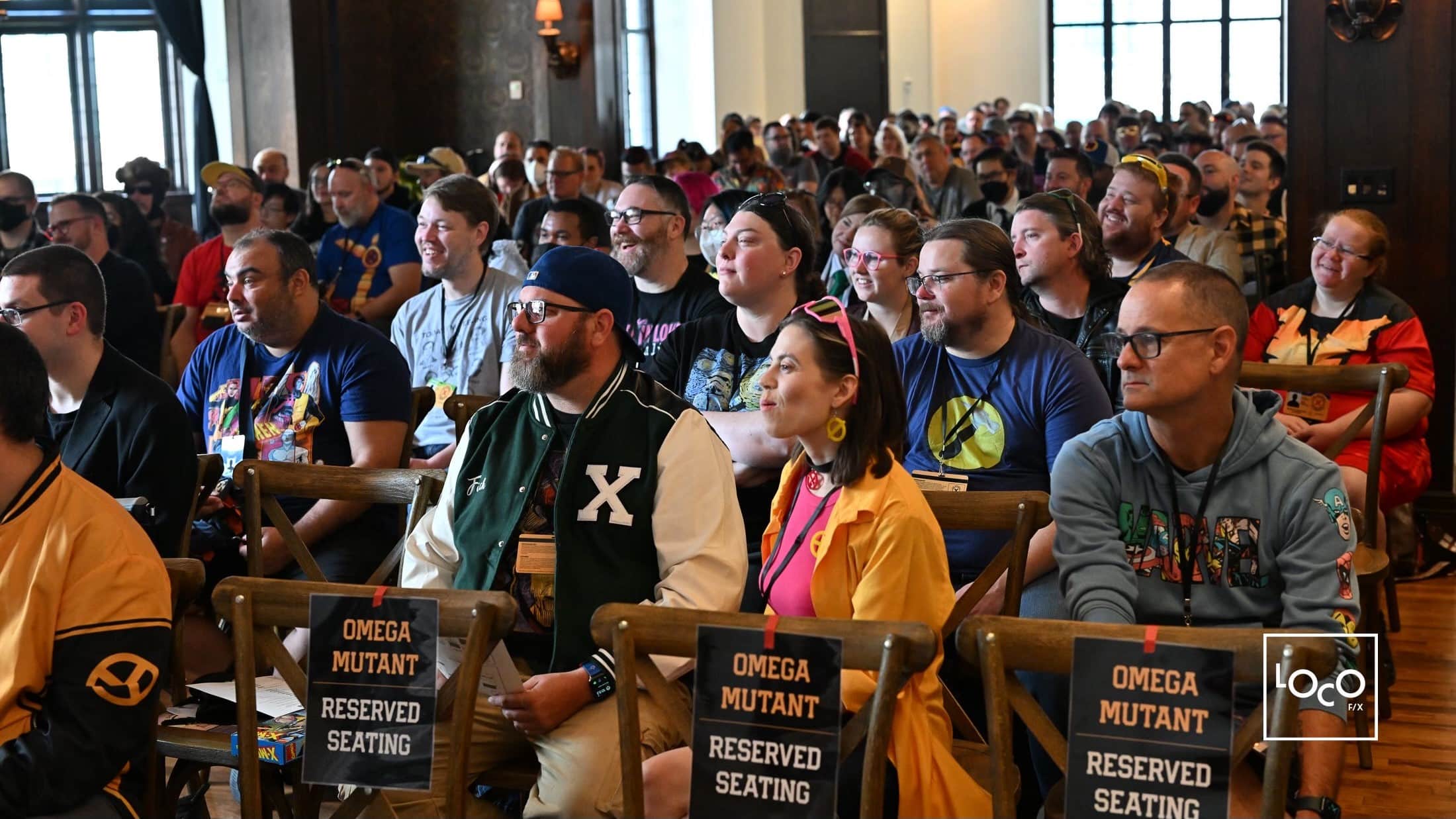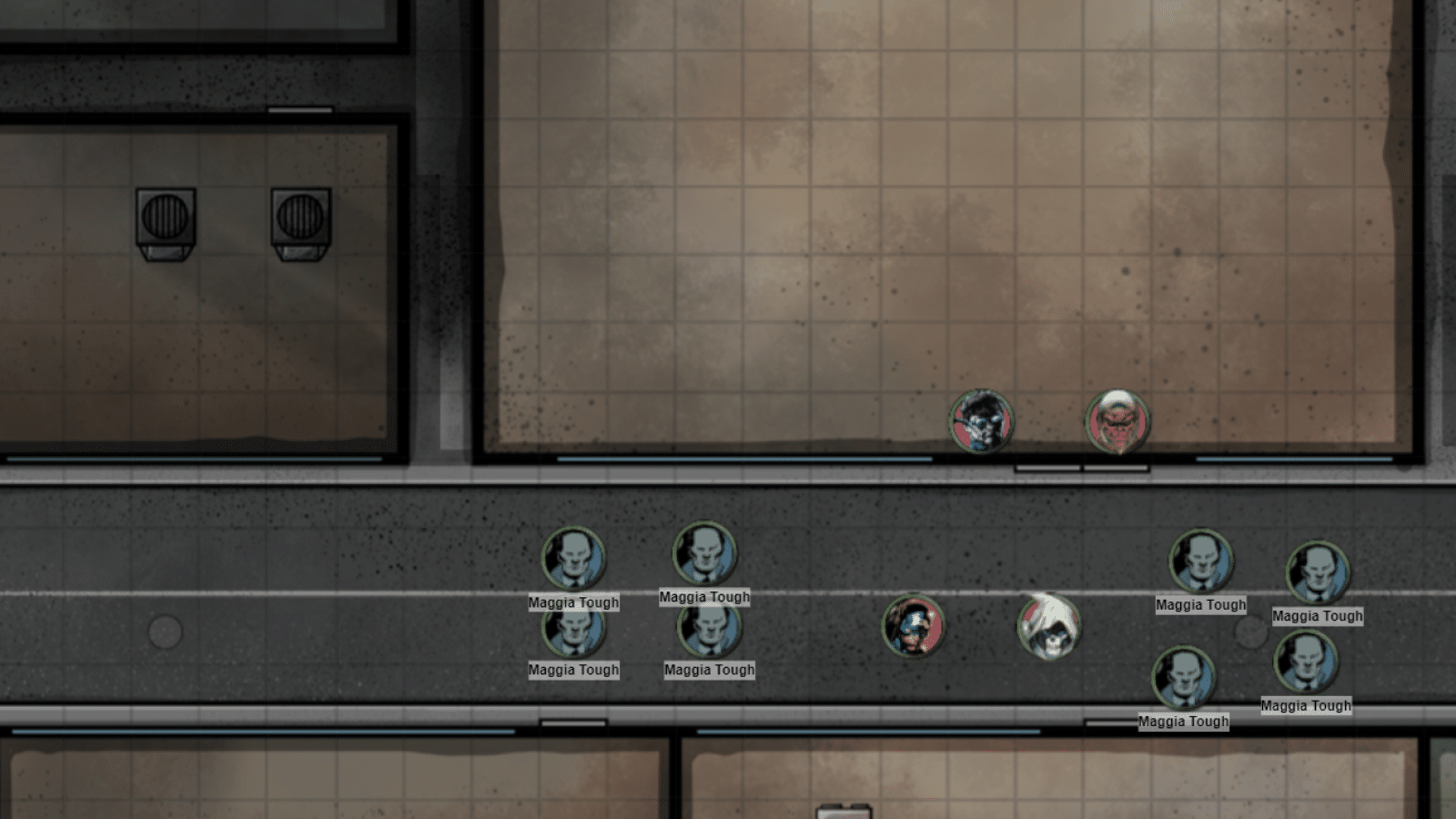With WandaVision set to bring the Marvel Cinematic Universe to the small screen for the first time via Disney Plus, the two title characters (Elizabeth Olsen’s Scarlet Witch and Paul Bettany’s Vision) are about to make history. But while the streaming series represents the first starring turn for the cinematic versions of Vision and Scarlet Witch, both characters have a long & storied publication history: children of Marvel’s Silver Age of comics (debuting in 1964 and 1968, respectively), both have been front-and-center for some of Marvel’s biggest and most notable stories, and along the way, have accumulated a rich history of storylines, character connections, and recurring plot points that can serve as inspiration for their live-action counterparts’ adventures – along with others that might be better left alone. Here, then, are a series of examinations looking at different aspects of the history behind Vision & Scarlet Witch.
Four Key Retcons
Even by the average of superheroes starring in decades-long serial narratives, both Scarlet Witch & Vision have been subjected to a shockingly large number of retcons & revisions to their histories over the years, retcons which have, somewhat uniquely, been particularly rife with instances in which the same plot points and “revelations” get repeated and retconned over and over again. Here are four key examples.
Scarlet Witch’s Parents
When Scarlet Witch first appeared as a member of Magneto’s Brotherhood of Evil Mutants alongside her brother Quicksilver, readers knew nothing of their family outside the twin siblings. As the pair hung around the Marvel Universe, rejecting the Brotherhood and joining the Avengers, it was eventually revealed that the Golden Age superhero Whizzer was the father of the two mutants (because writer Roy Thomas never met a Golden Age character he couldn’t retcon into somebody’s backstory, and Whizzer, like Quicksilver, ran fast).
Eventually, this was retconned, with Scarlet Witch and her brother said to be the children of a mysterious woman who fled from her husband shortly before giving birth, after which, the resultant twins were given (by Bova, a cow-woman evolved by the High Evolutionary, a long-standing villain with a penchant for genetic manipulation) to the Romani Django & Marya Maximoff to be raised (after the Whizzer, distraught by the death of his wife, passed on the opportunity but was left thinking Scarlet Witch and Quicksilver were his actual kids). Who was the mysterious birth mother? Well, at this time, creator John Byrne was playing a subtle game between Avengers & Uncanny X-Men, showing a retrospective Magneto mourning his deceased wife, who happened to look an awful lot like the woman shown in flashbacks giving birth to Quicksilver & Scarlet Witch (and who also looked a lot like Scarlet Witch; Byrne was of course drawing all these various happenings. Thus, if you were paying attention, it seemed John Byrne was quietly suggesting that none other than Quicksilver & Scarlet Witch’s old master in the Brotherhood of Evil Mutants was their father. This “open secret” amongst fans & professionals soon became official, as eventually Magneto introduced himself to Quicksilver & Scarlet Witch as their father, confirming he was the husband from whom their pregnant mother fled.

This remained the status quo for several decades, with Magneto, Scarlet Witch & Quicksilver functioning as a kind of dysfunctional First Family of mutants. But then, Marvel started making movies for themselves, and those movies started making money, and Quicksilver & Scarlet, one foot each in the world of the Avengers (whose characters Marvel owned the rights to make movies about) and the X-Men (whose character movie rights Marvel had sold to Fox years ago), were caught between two worlds. To help ease this legal kerfuffle, their relationship to Magneto was retconned again (along with their status as mutants), revealing he wasn’t their father and they were, in fact, the biological children of the Maximoffs.
But the retcon Powers That Be weren’t done with Quicksilver & Scarlet Witch yet; shortly thereafter, a further retcon was added to the mix: the twins are actually the children of Django Maximoff’s sister, Natalya, the original Scarlet Witch. Django and his wife ended up raising them after Natalya seemingly died trying to retrieve her kidnapped children from the High Evolutionary.
Vision and the Original Human Torch
Shortly after the Vision, a sentient android or “synthezoid” created by the villainous (and robotic) Ultron, debuted, rejected his “father” and joined the Avengers, writer Roy Thomas began to hint at a relationship between Vision and the original android Human Torch from the Golden Age (see above re: Roy Thomas). Writer Steve Englehart, in the course of his largely unrelated “Celestial Madonna” story arc, later paid off these hints, revealing that Ultron created Vision out of the inert form of the original Human Torch.

Years later, John Byrne (him again), reversed this, establishing the two as separate beings and resurrecting the OG Human Torch. But then Kurt Busiek came along, and in the pages of Avengers Forever (a twelve issue miniseries dedicate to futzing around with this kind of stuff) said, “no, just kidding, Vision is made from the Human Torch” and revealed that Immortus (a future incarnation of Avengers villain Kang the Conqueror and general mucker-about-with-time guy) split the Human Torch into two separate beings, one to become the basis of Vision, one to be revived by John Byrne years later, all of which was done as part of Immortus’ long-term manipulation of Scarlet Witch.
Scarlet Witch and Chaos Magic
When Scarlet Witch first appeared, she had a mutant “hex” power; basically, she waved her hands and weird stuff – usually with a good outcome for her – would happen. Over time, this metaphorical witchcraft became more literal, as the character began to train in the use of actual sorcery under the tutelage of Agatha Harkness (one-time nanny to the Fantastic Four’s Franklin Richards). During this time, it was revealed that the Elder God, Cthon, meddled with Scarlet Witch as an infant, intent on making her a conduit for his “chaos magic”, something her mutant ability made her particularly suited to wielding, thus making her a suitable vessel for his rebirth. “Chaos Magic” eventually became the shorthand for Scarlet Witch’s abilities from this point forward, especially during Kurt Busiek’s late 90s Avengers run (when it was used, amongst other things, to resurrect the dead Avenger Wonder Man).

But then, Brian Michael Bendis came aboard and set about “disassembling” the Avengers, mostly by having Scarlet Witch go crazy and cause a bunch of Avengers to die (most of which eventually got better). Along the way, Doctor Strange shows up and says “Chaos magic? Never heard of it!”, then says Scarlet Witch’s true power is reality warping – all those hexs were just creating tiny little alternate universes in which things went her way! This set the stage for House of M and “no more mutants”, followed by a good chunk of time in which Scarlet Witch got mostly ignored. When she came back into regular usage again (in series like Uncanny Avengers and a short-lived solo book), chaos magic was back in the mix, and specifically called out as the source of her previous reality-alterations.
Billy & Tommy Maximoff
Once upon a time, a mutant and an android met, fell in love, and got married. Then, via magic, the mutant bore the couple children, twin boys named William and Thomas. And all was well. Until Master Pandemonium, a demon sorcerer with babies for arms, showed up, claiming the twin boys were actually manifestations of his soul. Turns out he was wrong, but the boys WERE manifestations of souls belonging to a different demonic being, Mephisto (Marvel’s Comics Code-friendly stand-in for Satan); Scarlet Witch, in her desire to have children with Vision, subconsciously stole slivers of souls from Mephisto when creating her children. But the children themselves were not real. This was all part of an ill-advised larger story arc (orchestrated, once again, by John Byrne) meant to push Scarlet Witch to the edge and make her evil by stripping away everything she cared about, which happened, briefly, after her children ceased to exist and Vision was dismantled by a coalition of world governments and robbed of his emotions and thus, his love for his wife.

Years (and a few more ill-advised Scarlet Witch mental breakdowns) later, two teenage superheroes named Billy Kaplan and Tommy Shepherd, joined the Young Avengers. One had magical powers, the other could run fast (just like a certain Scarlet Witch’s brother). Eventually, it was confirmed that yes, these were the children of Vision and Scarlet Witch, reincarnated and raised by other families, no longer figments of Scarlet Witch’s imagination and/or manifestations of demon souls.
Five Memorable MCU Moments
Korea Train Attack
The closest thing we get to seeing “Cap’s Kooky Quartet” in action, in which Captain America, Quicksilver, and Scarlet Witch (and, to a lesser extent, Hawkeye & Black Widow) battle Ultron and work to stop a runaway train, this sequence from Avengers: Age of Ultron is the first time audiences are teased the full extent of Scarlet Witch’s power, beyond just giving people weird visions.
Vision Makes Paprikash
Like most of the relationships amongst supporting characters in the films, Scarlet Witch and Vision’s burgeoning romance largely plays out offscreen, a few touchstone moments aside (especially for casual fans not already aware Scarlet Witch and Vision being romantically involved is A Thing); this scene from Captain America: Civil War is one such moment, the first time we see the two interacting as more than teammates in battle, with Vision attempting to replicate a dish from Scarlet Witch’s MCU homeland (does it lead to some unfortunate implications when it turns out to be an effort on Vision’s part to keep her under virtual house arrest? Yes).
Vision’s Death(s)
For all that Age of Ultron sells Vision as a tremendously powerful character, he spends most of Avengers: Infinity War effectively as a MacGuffin: after being injured early in the film, he’s out of commission for most of the rest, the thing the Earthbound heroes are fighting to protect. In the end, he dies not once, but twice: first, when Scarlet Witch destroys the mind stone lodged in his head in order to prevent Thanos from harvesting it, then again when Thanos turns back time and harvests the stone for himself. And, unlike nearly everyone else who dies in Infinity War, Vision remains dead as of the conclusion of Avengers: Endgame, making his return in WandaVision a central initial question of the series.
Scarlet Witch vs. Thanos
Amidst all the set pieces of Sturm und Drang in the rip-roaring climax to Avengers: Endgame is Scarlet Witch’s short battle with Thanos, the being who destroyed Vision before her eyes in the previous film. Notably, this confrontation highlights just how powerful Scarlet Witch is, as she goes toe-to-toe with the villain in a way arguably no one else except for Captain Marvel is able, to the point where Thanos is forced to fire on his own troops in order to cause enough devastation to distract Scarlet Witch before she kills him.
Lifting Thor’s Hammer
Age of Ultron has its issues, but it also has its moments, one of which is an effective call-and-response in which, early in the film, the Avengers and assorted hangers-on all try to lift Thor’s hammer shortly before Ultron attacks for the first time. Initially, it’s a brief moment of levity and camaraderie before all hell breaks loose, but then it comes back into play later in the film. Having established that only the worthiest, most heroic of beings can wield the hammer in that initial scene, having the newly-born Vision – whose connection to Ultron engenders much distrust amongst the Avengers – casually pickup Thor’s hammer immediately & effortlessly establishes the character as a genuine hero, erasing any doubts amongst the audience or the characters as to his true motivations.
Eight Extended Family Members
Wonder Man

The brain engrams of Simon Williams, failed embezzler and super-villain, were used by Ultron to form the basis of Vision’s personality; when Wonder Man returned from the dead, he was eventually treated as a brother of sorts to Vision. Did this make the future love triangle between Vision, Scarlet Witch and Wonder Man a little squiggy? Yes.
Anti-Vision

Similarly, during the “Gatherers Saga” in the early 90s, an evil Vision from an alternate reality briefly replaced a captured Vision on the Avengers, and became the vehicle for restoring Vision to his original red-and-green look (after having been rendered in pale white following his deconstruction/reconstruction and loss of emotions).
Victor Mancha

Vision isn’t the only “son” Ultron created; Victor Mancha, member of the teenage Runaways, who is destined to destroy the Avengers of the future, is another one, who served alongside his “brother” in Avengers A.I. (a series about a team of robot Avengers).
Jocasta & Alkhema

Just as he made “sons”, Ultron had a penchant for building himself robotic female companions, making both Jocasta (based on the brain engrams of Wasp, Ultron’s “mother”) and the short-lived Alkhema (based on Mockingbird’s brain patterns) Vision’s, uh, sister-moms.
Hank Pym & Wasp

Of course, Ultron himself was created by Hank Pym (the first in a series of not-great looks for Hank), making Pym and Pym’s longtime love interest & occasional wife Wasp Vision’s pseudo-grandfather & grandmother.
Quicksilver

Not to be outdone, Scarlet Witch has a twin brother, the fleet-footed Quicksilver who, through his previous marriage to Crystal of the Inhumans, made Scarlet Witch and Vision in-laws to an entire hidden community of superpowered beings (and failed MCU characters).
Magneto

Scarlet Witch’s most famous relative was, of course, Magneto, before that relationship was retconned away. There was also a brief period in which one of the times when Polaris (who has suffered from her own share of Magneto-parentage retcons and re-retcons) was considered a daughter of Magneto overlapped with a period in which Scarlet Witch and Quicksilver were also still considered his children, making Polaris a half-sister to Scarlet Witch
Wiccan and Speed

Finally, of course, are the Vision/Scarlet Witch children, Billy and Tommy, aka Wiccan and Speed of the Young Avengers aka the current Prince Consort & Court Wizard of Intergalactic Emperor Hulking, and his super fast brother.
Ten Notable Issues
Avengers #57

The Vision makes his first appearance (and gains a name)!
Avengers #93

In this memorable and well-drawn installment of “The Kree-Skrull War” (featuring the work of Neal Adams), Hank Pym, as Ant-Man, must journey inside the Vision to repair the damaged android; the first hints of a relationship between Vision and the original Human Torch appear here.
Giant-Size Avengers #4

His true origins as the Human Torch confirmed (for now), Vision and Scarlet Witch are married in a dual ceremony alongside Mantis and a sentient plant shaped like her dead lover, the Swordsman, all officiated by the time-traveling Immortus. Comics!
Vision & Scarlet Witch #4

Magneto is confirmed to be the father of Scarlet Witch and Quicksilver (for now), as the repentant super-villain begins to make amends with his daughter and her husband.
Avengers #254

Vision, spurred on by his interface with an alien supercomputer, takes over the world in order to make it a better place, before being talked down and forcibly removing the “control crystal” that allowed for his corruption, setting the stage for later, more personally-catastrophic events.
West Coast Avengers #43

In the wake of his failed global takeover, a coalition of governments abducts and disassembles Vision; he is rebuilt, but for a time, loses the capacity for emotions, effectively ending the marriage of Scarlet Witch and Vision.
House of M #6

Spurned on by Quicksilver, who is fearful that the combined Avengers & X-Men are coming for his mentally unstable sister, Scarlet Witch creates a new reality in which mutants, led by Magneto’s “House of M”, rule the world. As the cracks in that reality begin to show and the heroes gather against them, Scarlet Witch utters the words which will hang over the X-books for years to come: no more mutants. With that, all but 2% of the world’s mutants (i.e. everyone who isn’t a popular mutant starring in a top-selling comic book) lose their powers and are made human, spurring a raft of stories in which various characters try to find Scarlet Witch and/or restore mutantkind to its former numerical glory, while branding Scarlet Witch as an enemy of mutants.
Uncanny Avengers (vol. 3) #4

Serving in the Avengers Unity Squad, Scarlet Witch learns she is not, in fact, a mutant, freeing her up for future roles in the MCU and earning her status in Krakoan society as “The Great Pretender”.
Vision #1

After five decades of existence and a number of years out of the spotlight, Vision headlines his own solo series, creating a whole suburban family of androids in a critically-acclaimed series.
Austin Gorton also reviews older issues of X-Men at the Real Gentlemen of Leisure website, co-hosts the A Very Special episode podcast, and likes Star Wars. He lives outside Minneapolis, where sometimes, it is not cold. Follow him on Twitter @AustinGorton






